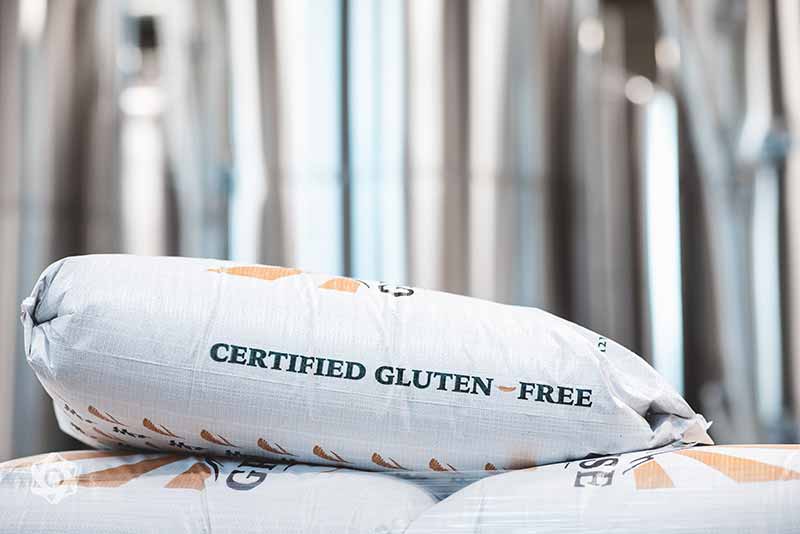
There are many ways to draw in more customers for breweries looking to be all-inclusive to their consumers’ preferences. You could brew highly sought beers like hazy IPAs, or emerging styles like Cold IPA. Beyond beer, some breweries have looked into mocktail menus. But gluten-free beer offers another way to consume for a demographic of drinkers with Celiac disease or some level of gluten intolerance or for those simply looking for a healthier lifestyle.
According to a 2022 report from Technavio, the gluten-free beer market share is expected to increase by $9.36 billion from 2021 to 2026. The report attributes this growth to the health halo that often surrounds gluten-free products.
Brewers at dedicated gluten-free brewing facilities Holidaily Brewing Co. and Divine Science—two of the less than twenty dedicated gluten-free breweries in the U.S.—explained the nuances of making gluten-free beer and how it can open up new possibilities for your brewery’s customer base.
(Photography courtesy of Holidaily Brewing Co.)
Affordable, Industry-Leading Brewery Software
What Is Gluten-Free Beer?
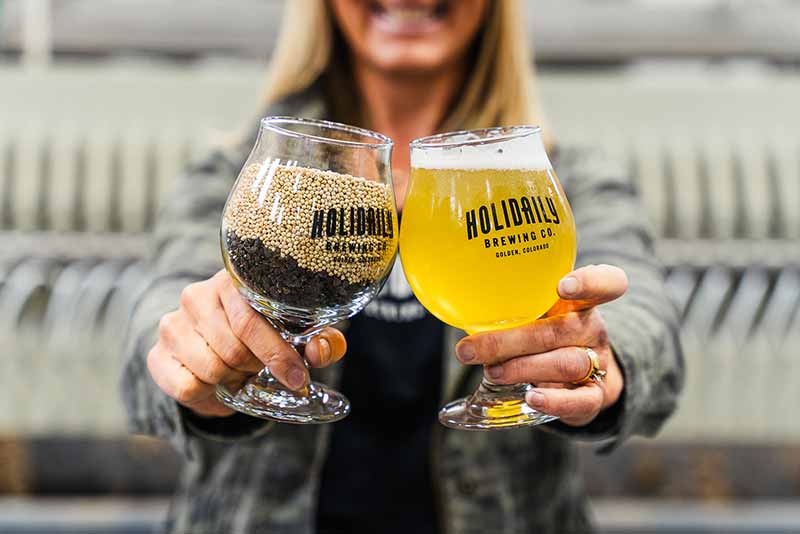
Photography courtesy of Holidaily Brewing Co.
Gluten-free beer must be devoid of any glutenous products.
According to the Food and Drug Administration, any product labeled as “gluten-free” must contain less than twenty parts per million (ppm) of gluten.
Because each individual who classifies themselves as gluten-free responds to gluten differently, even products described as gluten-reduced can have dangerous effects.
“Our owner, Karen Hertz, when she first started having to be gluten-free, she tasted a gluten-reduced beer from a national brand, and it put her in the hospital for observation,” Holidaily Brewing Head Brewer Alan Windhausen says. “So that’s one big thing. … The only way to be gluten-free is to use one hundred percent gluten-free ingredients.”
Divine Science Brewing Owner and Head Brewer Robert Keifer says that to understand gluten-free techniques and practices, you must look back to before Europeans expanded westward.
Many of the gluten-free beers made today include naturally gluten-free grains used less often in Western culture than those with gluten such as wheat, barley, and rye.
“When you look at a lot of Western cultures, a lot of European dominance has taken place. A lot of the wisdom we’ve gained in gluten-free has come from looking back to pre-colonial times,” says Keifer, also the author of “Gluten-Free Brewing.” “I think that these gluten-free ingredients are no strangers to agriculture, but they may be a stranger to certain Western palates.”
What Ingredients Make a Gluten-Free Beer?
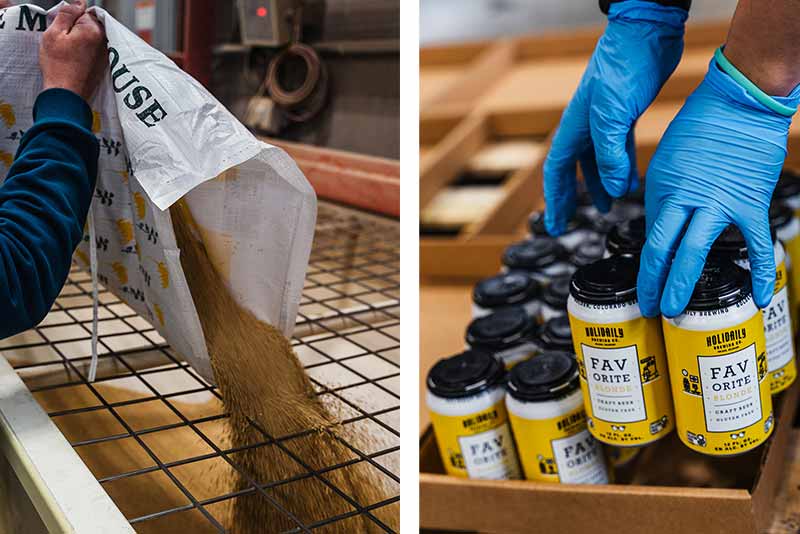
Photography courtesy of Holidaily Brewing Co.
To make gluten-free beer, brewers must avoid using wheat, barley, or rye. Instead, you should brew with millet, rice, corn, buckwheat, or millet subspecies such as sorghum, among others.
One ingredient, while technically gluten-free, that breweries try to avoid is oats.
Windhausen explains. “Oats, even though they’re technically gluten-free … have a similar molecule that about twenty percent of people with Celiac [disease] respond to,” he says. “So you can call something made with oats gluten-free, but you’re probably not going to want to market that as gluten-free for that reason.”
Windhausen adds that getting the ingredients from one of the two dedicated gluten-free malt houses in the U.S.—Eckert in California and Grouse in Colorado—is essential to avoid cross-contamination.
“There are other malt houses making malted sunflower seeds or malted buckwheat, but they’re using the exact same systems they use to malt their barley, wheat, and rye,” Windhausen says. “So there’s a high, high risk of cross-contamination. And so those kinds of things are not considered safe by the gluten-free community.”
Keifer has a preference for ingredients when building his gluten-free beer recipes.
“I love millet paired with rice and buckwheat sometimes, depending on the style. Those are some of the go-tos,” he says. “But then if I want a little bit of character, I look at some corns or sorghums, and certain oats can be certified gluten-free.”
Keifer adds: “There’s a lot of other grains to consider. Those are going to elicit different tastes.”
He says that these gluten-free ingredients are good enough to use in regular brewing, too.
“I think that when you look at these grains, you could still use them in a barley-based beer,” Keifer says. “I don’t think there’s really anything that’s stopping you. You get incredible tastes and aromas [from these ingredients].”
What are the Differences in Gluten-Free Beer?
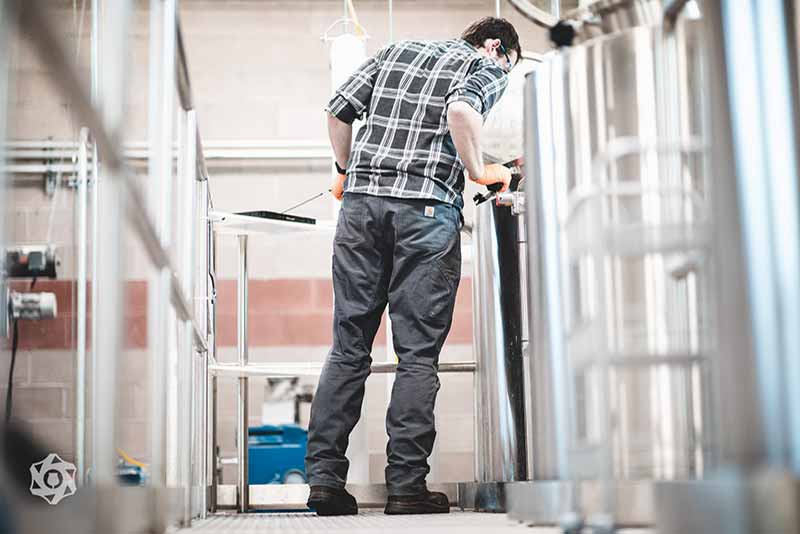
Photography courtesy of Holidaily Brewing
From the brewing process, it’s pretty much the same, despite different mash temperatures for extraction, Keifer and Windhausen say.
For a great-tasting finished product, you have to consider the ingredients when assessing the beer.
“When you’re talking about beer made with barley, you’re varying the amount of adjuncts you put in; you might be going up to twenty, maybe twenty-five percent of something besides barley,” Windhausen says. “But when you talk about gluten-free, you’re talking about one-hundred percent adjunct beers. So your entire process will be based on what actual material you use.”
You can make gluten-free beer by using different syrups such as sorghum syrup or Belgian Candi syrups, but those limit the mouthfeel and have low head retention. Instead, Windhausen says he uses gluten-free ingredients like millet and buckwheat that tend to help with mouthfeel and head retention, respectively.
“Millet is a really, really good analog for barley,” Windhausen says.
Keifer notes that gluten-free ingredients are “almost traditional flavors” when comparing the two styles. Divine Science tries to limit the differences.
“The only difference between ordinary and extraordinary is that little extra,” Keifer says. “A lot of our brews are brewed specifically with specific beers in mind.”
For instance, Divine Science’s hazy IPA, which focuses on naturally gluten-free hops. So it’s just a matter of finding an analog for wheat and barley.
“Our IPAs are just drastically popular,” he says.
How Much Does it Cost to Brew Gluten-Free Beer?
Keifer says we’ve built much of our brewing knowledge in the U.S. with barley, wheat, or rye in mind. That has caused a spike in the cost of gluten-free ingredients, which have a smaller demand.
“When you look at the actual cost to try to do it specifically for gluten-free grains, there’s just not enough of it being done. So then your price, of course, skyrockets over that,” Keifer explains.
The Divine Science Brewing owner ballparked that the cost of making gluten-free beer is about twice that of brewing your “traditional” craft beer.
Windhausen says that the highest cost of making the gluten-free beer is the grains, with the base malts $3 per pound or more—a stark uptick from a base two-row malt that costs under $1 per pound.
“It’s about six times more expensive than other modes of brewing,” Windhausen says.
The Best Tips for Making Gluten-Free Beer
First and foremost, you have to have a pristine system. Windhausen says if you don’t have a dedicated system for gluten-free beer production, give all your tanks, hoses, clamps, and valves a thorough cleaning.
“[Give everything an] overnight caustic soak, followed by an acid wash before brew day,” he says. “You can’t one-hundred percent guarantee safety; you can just do your best to ensure [you’ve done what you can to avoid cross-contamination].”
Windhausen and Keifer advised that, for providing guests an option for gluten-free beer, it would be ideal that it be made at a dedicated gluten-free brewery like Holidaily or Divine Science for the customer’s safety. But short of that, the cleaning is paramount.
One other tip both stressed is to have the gluten-free grains pre-cracked so you don’t send the grains through the grain mill that undoubtedly will have remnants of wheat, barley, or rye within the belts.
Keifer likened a gluten-free beer operation to making a sour beer in a “traditional” brewery.
“Treat it like it’s a sour beer. You’re trying to not turn your regular ales into a sour ale,” he says. “And that’s where you would have different sets of, say, hoses—the soft parts, really. Stainless steel is really good, being non-porous. But certain elements in your brewhouse that are hard to get away from and are just naturally porous.”
One final tip from Keifer for those looking to dive into brewing gluten-free beer: Read his book.
“Getting the book and reading it is going to help a lot of the people that digest the content,” Keifer says.
Two Examples of Gluten-Free Beer
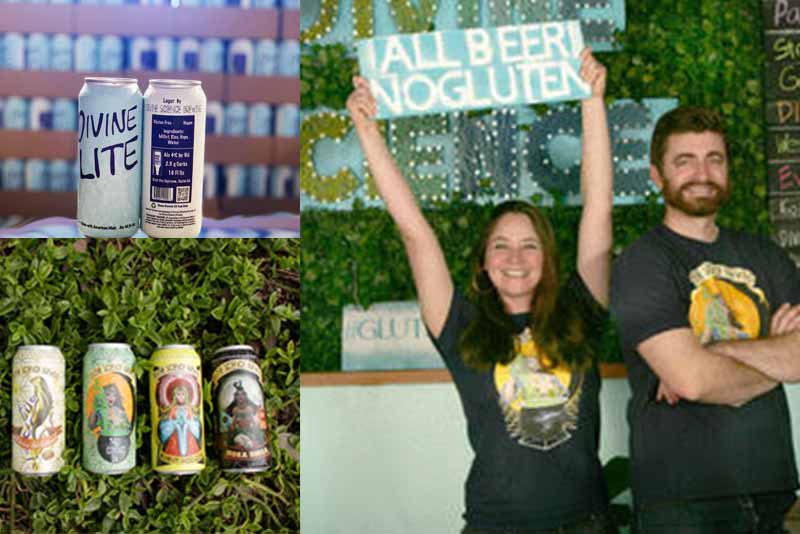
Photography courtesy of Divine Science
Divine Science has mastered how to make a pilsner without the pilsner malt. Instead, they make the 5.8% ABV gluten-free beer Divine Millsner with millet, water, hops, and yeast.
Windhausen says that the brewery entered its Holidaily Favorite Blonde into a beer competition without labeling it as gluten-free and put it into the blonde category. The beer beat out two-thirds of the competition. Windhausen makes the 5% ABV ale with ninety percent millet and ten percent buckwheat.



